Key Takeaways
-
Physical Differences: Honey bees are fuzzy and round with barbed stingers used once; wasps are smooth and slender with smooth stingers capable of multiple stings.
-
Behavioral Traits: Honey bees are generally calm and sting defensively, while wasps are aggressive and territorial, often stinging when disturbed.
-
Habitats & Nesting: Honey bees build wax combs in tree cavities or hive boxes; wasps make papery nests in sheltered places like eaves, attics, or shrubs.
-
Environmental Roles: Honey bees are essential pollinators in agriculture; wasps help control insect populations through predation.
-
Safety and Management: Bee removal should involve beekeepers due to their ecological role; large or aggressive wasp nests should be handled by pest control professionals.
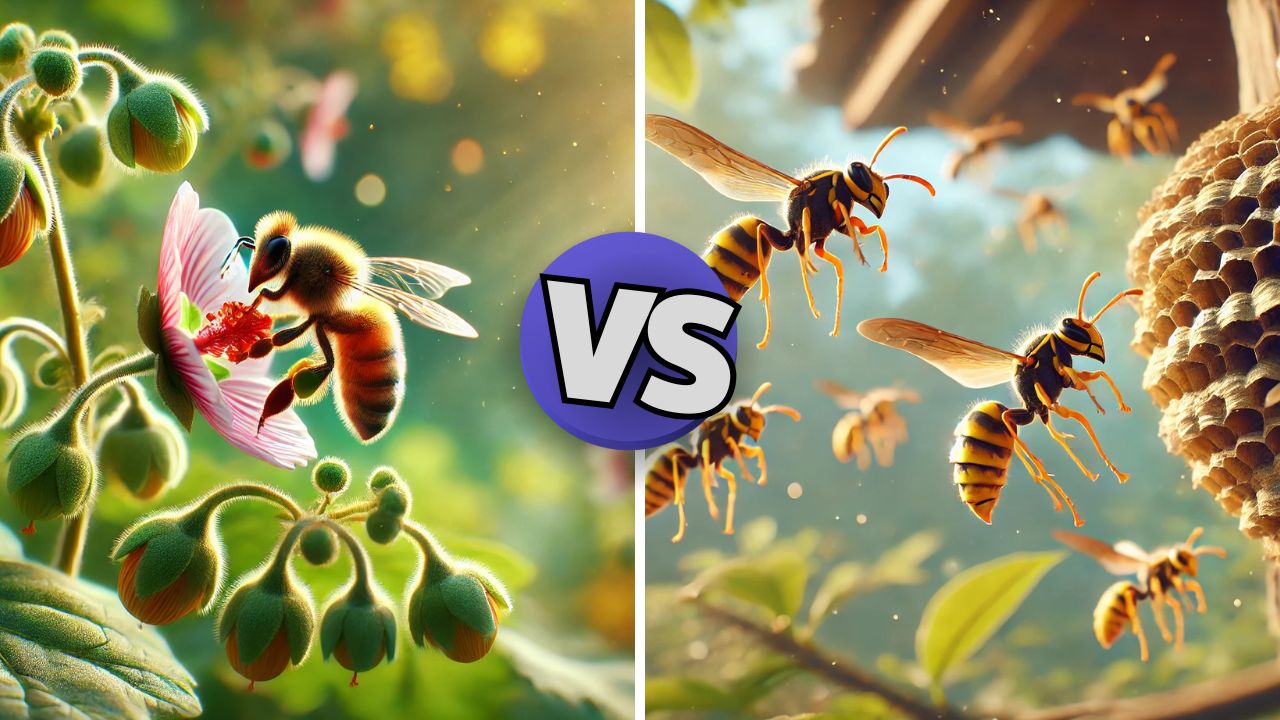 When it comes to stinging insects, honey bees and wasps are often confused with each other due to their similar appearance. However, these two species are vastly different in terms of behavior, habitat, and the risks associated with their stings. While honey bees are essential pollinators and relatively non-aggressive, wasps can be highly territorial and capable of stinging multiple times.
In this guide, we will explore their physical characteristics, behaviors, nesting habits, and health risks, equipping you with the knowledge needed to distinguish and handle them safely.
Unsure whether you have bees or wasps around your home? Schedule a Free Pest Inspection with our experts, and we’ll help you identify and manage these stinging insects effectively.
When it comes to stinging insects, honey bees and wasps are often confused with each other due to their similar appearance. However, these two species are vastly different in terms of behavior, habitat, and the risks associated with their stings. While honey bees are essential pollinators and relatively non-aggressive, wasps can be highly territorial and capable of stinging multiple times.
In this guide, we will explore their physical characteristics, behaviors, nesting habits, and health risks, equipping you with the knowledge needed to distinguish and handle them safely.
Unsure whether you have bees or wasps around your home? Schedule a Free Pest Inspection with our experts, and we’ll help you identify and manage these stinging insects effectively.
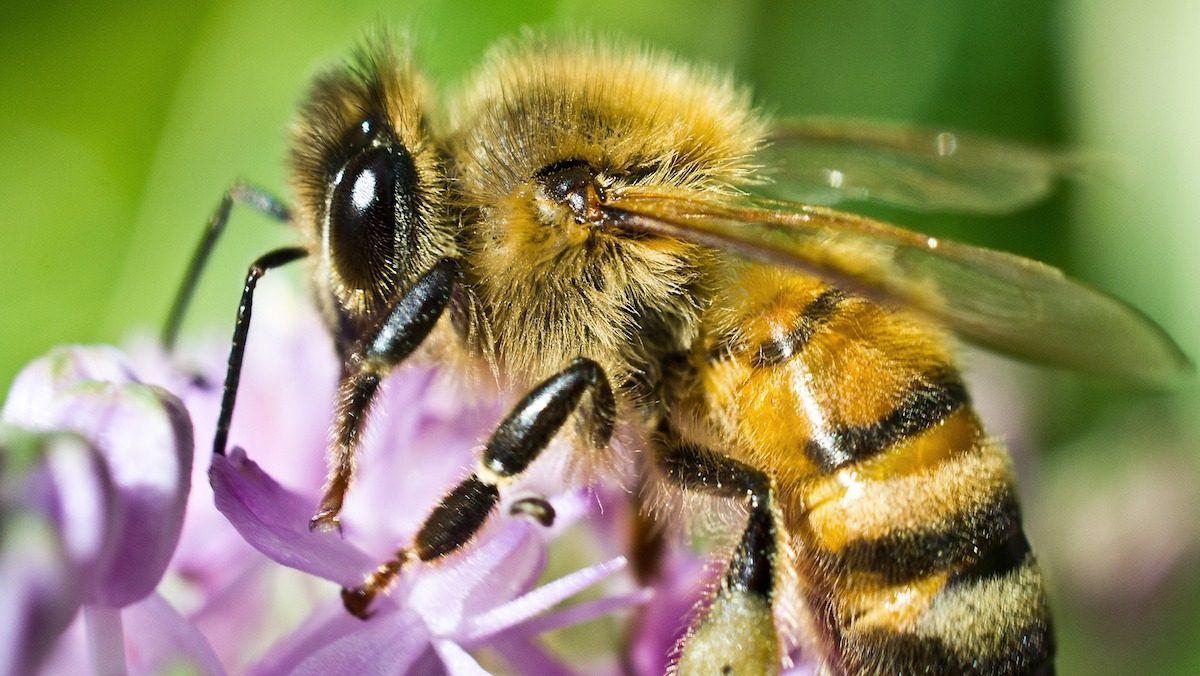

Not getting a solution?
Get your free pest control estimate today!What is a Honey Bee?
Honey bees are social insects known for their role in pollination and honey production. They live in large, organized colonies and are relatively docile, stinging only when threatened. Unlike wasps, honey bees die after stinging, making them less likely to attack unless provoked.Physical Characteristics of Honey Bees
-
Size: About 1/2 inch (12-15 mm) long.
-
Shape: Rounder, fuzzy body covered in fine hairs to help collect pollen.
-
Color: Golden brown or orange, with black and yellow stripes.
-
Wings: Shorter wings compared to their body size.
-
Stinger: Barbed stinger that remains in the skin after stinging.
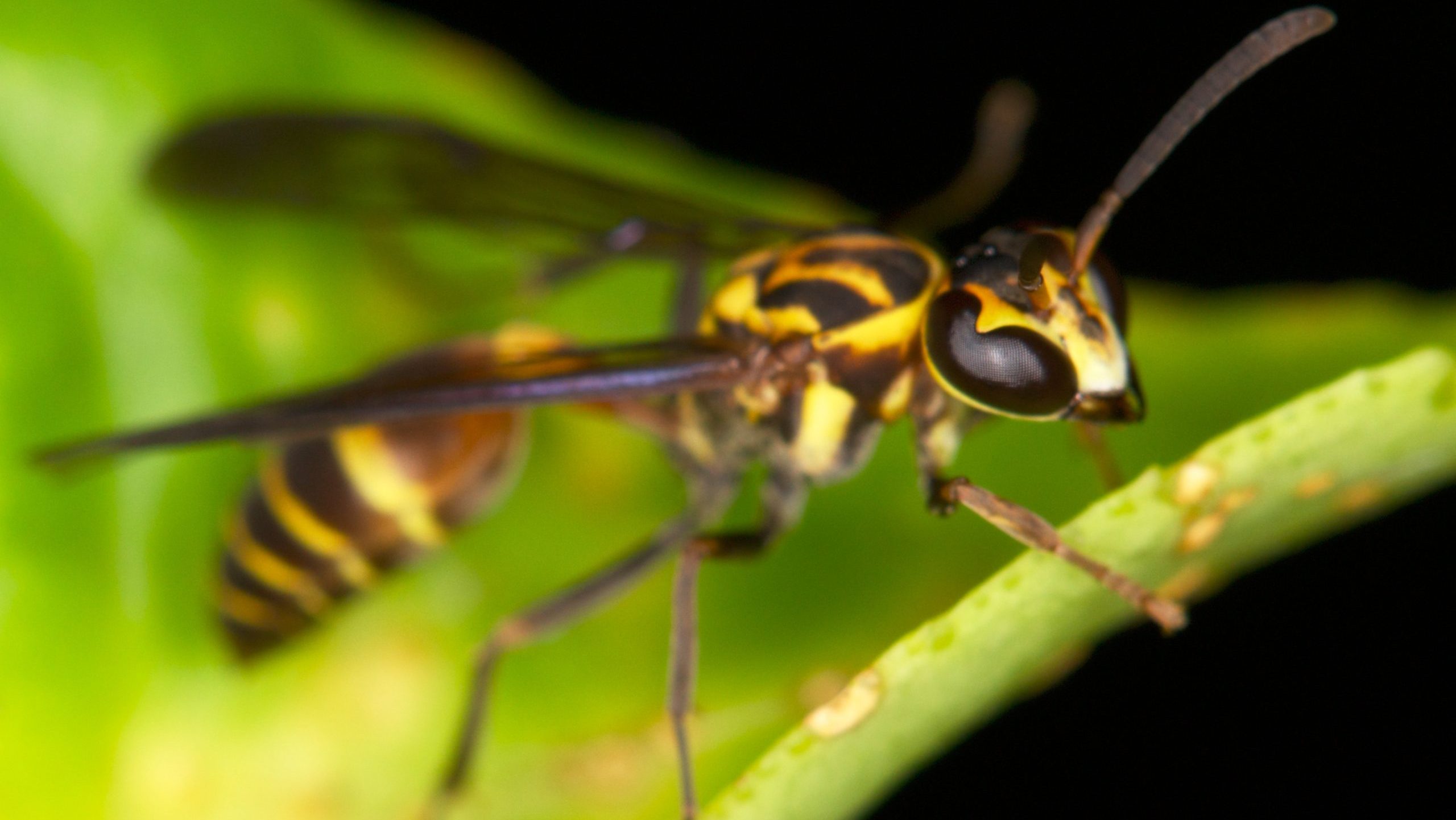
What is a Wasp?
Wasps are predatory insects that help control insect populations but are often seen as a nuisance due to their aggressive nature. Wasps can harm you with their sting multiple times, making them a greater threat when disturbed.Physical Characteristics of Wasps
-
Size: 1/2 inch to 1 inch (12-25 mm) long.
-
Shape: Slender, smooth body with a narrow waist.
-
Color: Bright yellow and black stripes, with a shiny, hairless appearance.
-
Wings: Longer wings that extend past their body.
-
Stinger: Smooth stinger, allowing them to sting multiple times without dying.
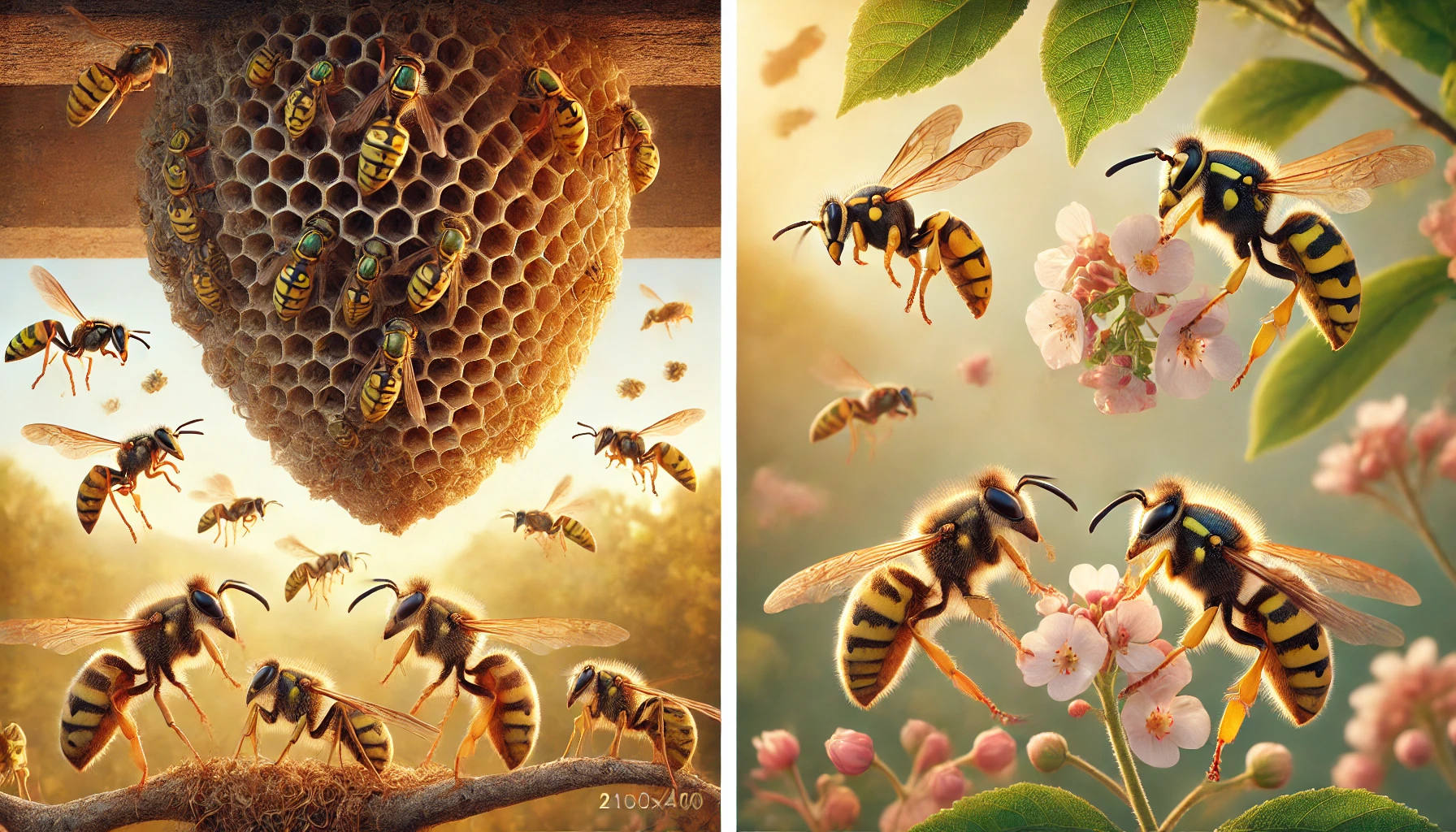
Social vs. Solitary Wasps
-
Social Wasps: Live in colonies that may contain dozens to thousands of members. They build and defend communal nests and divide responsibilities—queens reproduce, while workers hunt and maintain the nest.
-
Solitary Wasps: Each female builds and provisions her own nest without help. They do not form colonies or provide post-laying care for their young.
Typical Habitats and Nesting Habits
- Understanding where honey bees and wasps typically build their nests can significantly reduce accidental encounters. Here’s how their preferred nesting spots differ, so you can stay alert and safe.
-
Social Wasps: Build nests in protected spots like eaves, attics, bushes, or underground. Nests are seasonal—only queens survive winter to establish new colonies in spring.
-
Solitary Wasps: Nest in sandy soil, wood crevices, hollow stems, or mud chambers. Their nests are simple and meant solely for laying eggs and storing food for the larvae.

Social Behavior and Colony Structure
-
Honeybees: Live in structured colonies with a queen, drones, and worker bees. Tasks include hive maintenance, foraging, and defense. Communicate using dances and pheromones.
-
Wasps: Social wasps form colonies with a queen and workers for hunting and nest building. Solitary wasps live alone, only nesting to lay eggs.
Habitat and Nesting Preferences
-
Honeybees: Nest in hollow trees, walls, or beehives. Build long-lasting wax combs for honey, pollen storage, and brood rearing.
-
Wasps: Construct paper-like nests from chewed wood. Social species nest in sheltered outdoor spots; solitary species use soil, stems, or mud.

Role in Pollination and Environment
-
Honeybees: Major pollinators aiding plant reproduction and agriculture by pollinating fruits, vegetables, and nuts.
-
Wasps: Contribute to pollination but are more prominent as natural pest controllers, preying on insects to maintain ecological balance.
Key Differences Between Honey Bees and Wasps
| Feature | Honey Bees | Wasps |
|---|---|---|
| Size & Shape | Rounder, fuzzy body (~1/2 inch) | Slender, smooth body (~1/2 – 1 inch) |
| Color | Golden brown with black stripes | Bright yellow with black stripes |
| Wings | Shorter wings relative to body | Longer wings extending past body |
| Stinger | Barbed, single-use stinger | Smooth stinger, used multiple times |
| Aggression | Non-aggressive unless provoked | Highly aggressive, territorial |
| Behavior after stinging | Dies after stinging | Can sting multiple times without dying |
| Role in ecosystem | Pollinator, essential for plant growth | Predator, controls insect populations |
How to Identify Honey Bees and Wasps?
Knowing how to differentiate between honey bees and wasps helps in managing encounters safely and avoiding unnecessary extermination of honey bees. Honey bees have a distinct fuzzy appearance due to their role as pollinators. Wasps are sleek, aggressive, and capable of multiple stings.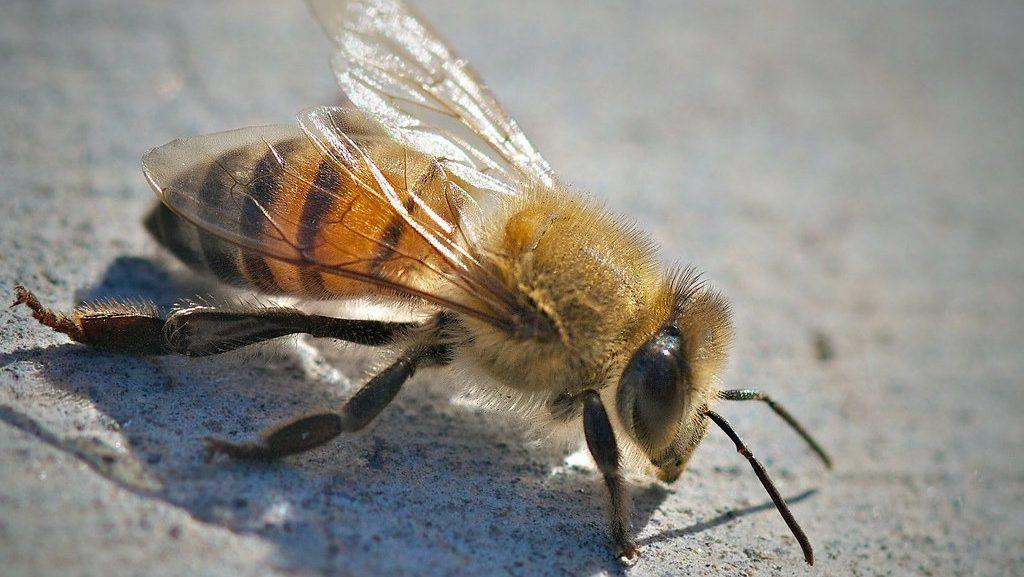
Identifying a Honey Bee
-
Body: Round, fuzzy body with visible hair.
-
Color: Golden brown or orange color with black stripes.
-
Stinger: Barbed stinger that is left in the skin after stinging.
-
Behavior: Calm behavior, buzzing around flowers rather than aggressively patrolling food sources.
-
Hive: Hexagonal wax hives, often found in hollow trees, attics, or beekeeping boxes.
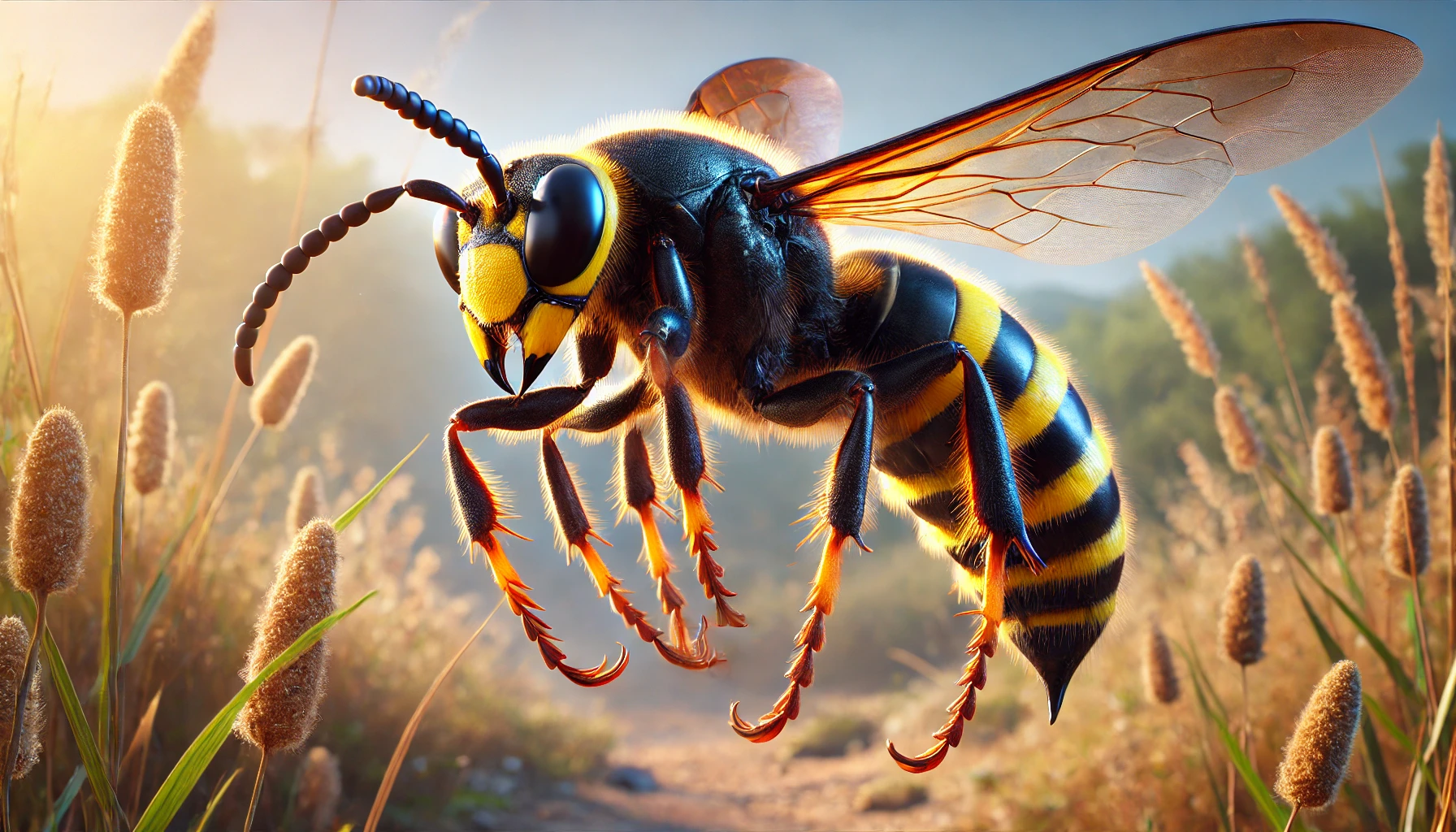
Identifying a Wasp
-
Body: Slender, smooth body with a narrow waist.
-
Color: Bright yellow and black stripes with a shiny appearance.
-
Stinger: Smooth stinger, enabling them to sting multiple times.
-
Behavior: Highly aggressive, often hovering near food or attacking perceived threats.
-
Nest: Papery nests, often found in trees, attics, or underground burrows.

How to Prevent Honey Bees and Wasps?
Preventing these insects from nesting near your home helps reduce the risk of stings and infestations. Since honey bees are essential pollinators, removing them should be handled carefully to avoid harming the population. Wasps are territorial and build nests quickly, so early prevention is essential.
Preventing Honey Bees
-
Seal cracks and gaps around your home to block entry points.
-
Limit exposed food sources, especially sugary liquids like soda or fruit juice.
-
Use bee-friendly repellents such as cinnamon or citronella around outdoor seating areas.
-
Call a professional beekeeper if a hive forms near your home—never exterminate honey bees unnecessarily.
Preventing Wasps
-
Eliminate food sources by keeping trash cans sealed and cleaning up food spills.
-
Check for nests regularly in attics, trees, eaves, and outdoor structures.
-
Seal potential nesting areas by covering holes, cracks, and wall gaps.
-
Use wasp traps to capture and reduce their numbers around your home.
-
Apply insecticidal sprays to existing nests at night when wasps are less active.

How to Treat a Sting from a Honey Bee or Wasp?
Both honey bee and wasp stings can cause pain, swelling, and severe allergic reactions. Treating the sting properly can help reduce discomfort and prevent complications.Treating a Honey Bee Sting
-
Remove the stinger immediately by scraping it with a credit card (avoid squeezing).
-
Wash the area with soap and water to reduce the risk of infection.
-
Use a cold compress to reduce swelling and pain.
-
Use antihistamines or hydrocortisone cream to relieve itching and inflammation.
-
Monitor for allergic reactions, such as swelling beyond the sting site, difficulty breathing, or dizziness—seek medical help if severe symptoms develop.
When Bees Are Beneficial vs. Problematic
Honeybees are beneficial due to their critical role in pollination, enhancing agricultural yields and ecological health. However, they become problematic if their colonies establish in areas that pose risks to humans, such as home walls, chimneys, or high-traffic areas.When to Seek Professional Beekeepers
If a honeybee colony is found in a problematic location, contacting a professional beekeeper is the best course of action. Professional beekeepers can safely relocate bees, preserving the colony and ensuring minimal disruption to pollination activities.
Treating a Wasp Sting
-
Move away from the area to prevent additional stings.
-
Rinse the site of sting thoroughly with soap and water.
-
Use a cold compress to soothe the pain and reduce swelling.
-
Take antihistamines to reduce allergic reactions.
-
Use pain relievers such as ibuprofen if needed.
-
Seek medical help immediately if experiencing symptoms of anaphylaxis (difficulty breathing, rapid swelling, dizziness).
DIY Tips for Dealing with Wasps
If you find wasps around your home, try preventive measures first:- Keep food and drinks covered outdoors.
- Seal garbage bins tightly.
- Use wasp traps available at home improvement stores.
- Remove old, abandoned nests during colder months when wasps are inactive.
When to Contact Pest Control Professionals
Professional pest control is recommended if:- Wasps nests are large or in difficult-to-reach areas.
- You experience frequent wasp encounters and aggressive behavior.
- Household members have allergies to wasp stings.
Myths and Facts About Honey Bees and Wasps
| Myth | Fact |
|---|---|
| Honey bees are aggressive and sting often. | Honey bees are generally non-aggressive and only sting when threatened. |
| Wasps and hornets are the same thing. | Wasps and hornets are different; hornets are a type of wasp but larger and more aggressive. |
| All wasps die after stinging. | Wasps can sting more than once because they have a smooth sting. |
| Honey bees produce honey only in summer. | Honey bees produce honey year-round, but store it for winter. |
| Wasps are only a problem in late summer. | Wasps can be a problem in late summer and early fall when they become more aggressive. |





